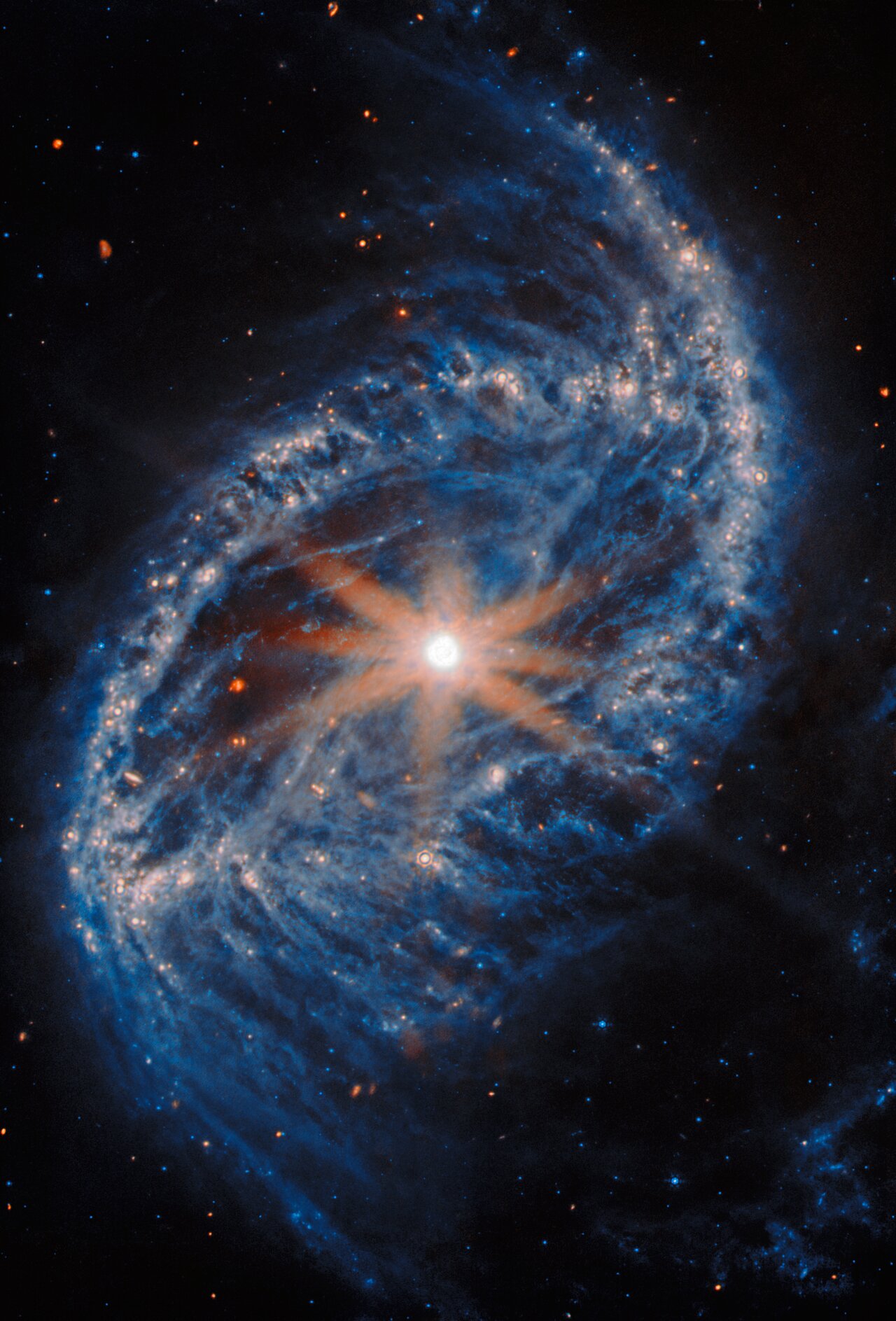About the Object
| Name: | NGC 2566 | |
|---|---|---|
| Distance: |
76 million light years | |
| Constellation: | Puppis | |
| Category: | Galaxies MIRI Picture of the Month | |
Coordinates
| Position (RA): | 8 18 45.51 |
|---|---|
| Position (Dec): | -25° 29' 57.12" |
| Field of view: | 2.58 x 3.81 arcminutes |
| Orientation: | North is 95.6° right of vertical |
Colours & filters
| Band | Wavelength | Telescope |
|---|---|---|
|
Infrared
PAH | 7.7 μm | James Webb Space Telescope MIRI |
|
Infrared
PAH | 7.7 μm | James Webb Space Telescope MIRI |
| Infrared | 21 μm | James Webb Space Telescope MIRI |
| Infrared | 21 μm | James Webb Space Telescope MIRI |
NGC 2566 (MIRI image)
The galaxy filling the frame in this NASA/ESA/CSA James Webb Space Telescope Picture of the Month is NGC 2566, a spiral galaxy located in the constellation Puppis. In this image Webb’s Mid-InfraRed Instrument (MIRI) puts the thick clouds of interstellar dust that suffuse NGC 2566 on display, as well as the galaxy’s compact, bright core.
At 76 million light-years away, NGC 2566 is considered a nearby galaxy, making it an excellent target for studying fine details like star clusters and gas clouds. The new Webb images of NGC 2566 were collected as part of an observing programme (#3707) dedicated to understanding the connections between stars, gas and dust in nearby star-forming galaxies. NGC 2566 is just one of the 55 galaxies in the local Universe examined by Webb for this programme.
To gain a full understanding of the star-formation process in nearby galaxies, astronomers will combine Webb data with observations from other telescopes. At the long-wavelength end of the electromagnetic spectrum, the 66 radio dishes of the Atacama Large Millimeter/submillimeter Array (ALMA) provide a detailed view of the cold, turbulent clouds where stars are born. The NASA/ESA Hubble Space Telescope has also cast its gaze on NGC 2566, and a new Hubble image of this galaxy was released earlier this week. The Hubble data will help researchers take a census of the stars in nearby galaxies, especially the young stars that are bright at the ultraviolet and visible wavelengths to which Hubble is sensitive. Together, the Webb, Hubble and ALMA data provide a rich view of the cold gas, warm dust and brilliant stars in NGC 2566.
The Webb data are part of a Treasury programme, which means that the data may help answer multiple important questions about our Universe. Treasury data are available for use by scientists and the public without a waiting period, amplifying the scientific impact and allowing exploration to begin immediately.
[Image Description: A spiral galaxy, seen close-up. Its core is a round spot that glows intensely bright, crowned by eight long and spikes that extend across the galaxy, artefacts of the telescope’s structure. Its disc is an oval shape with edges made of very thick and cloudy arms of gas and dust, mostly blue but paler and brighter around patches of stars. Wisps of darker dust also fill the inner disc and swirl off the ends of the arms.]
Links
Credit:ESA/Webb, NASA & CSA, A. Leroy
About the Image
| Id: | potm2412b | |
|---|---|---|
| Type: | Observation | |
| Release date: | 18 December 2024, 10:00 | |
| Size: | 1398 x 2061 px | |




